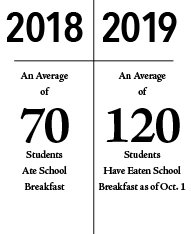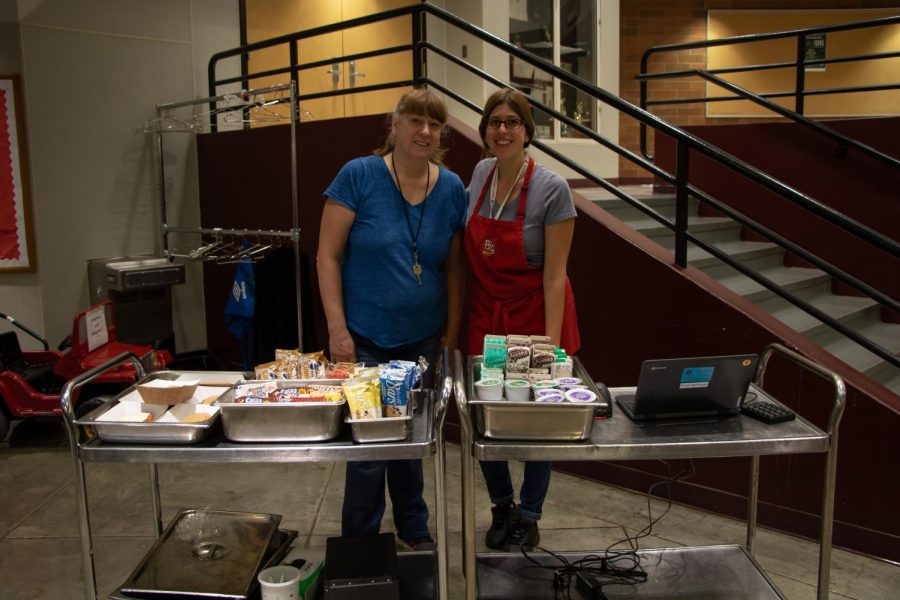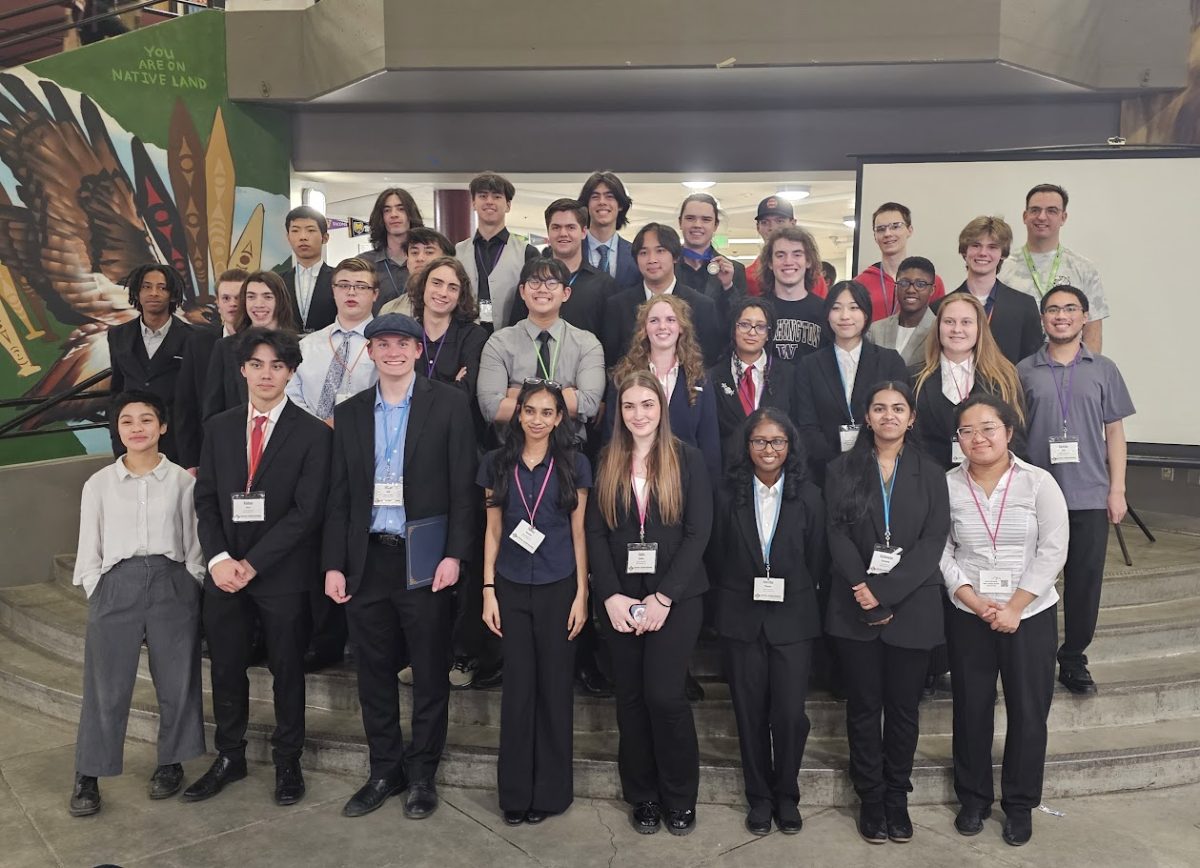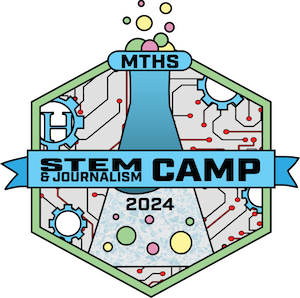Both returning and new students were introduced to a recently added feature on Terrace’s schedule during the past month. Over the summer, administration, with the advice of teachers, decided to expand the length of the passing period between first and second periods from five to ten minutes. This now expanded period, referred to as a nutrition break, is intended to allow students a chance to eat breakfast if they were unable to before the start of the school day.
In addition to the cafeteria serving breakfast during this time, a cart has also been set up on the second floor next to the theater that serves breakfast to passing students.
Director of Food and Nutrition Services for the Edmonds School District Megan de Vries advocated for the implementation of nutrition breaks into the schedules of all secondary schools in the district. In this role, she gave presentations to all secondary principals, including MTHS Principal Greg Schellenberg, describing the benefits that students can derive from designated nutrition breaks to be placed into the schedule.
“[Schellenberg] gathered input from the teachers then moved forward with it this fall,” de Vries said.
After a review of the eating habits of students throughout the ESD, it was found that few students are taking advantage of the meal opportunities that all district schools provide.
“Nutrition breaks were implemented to increase the number of students eating breakfast on school days,” de Vries said. “About 30 percent of the students at MTHS qualify for free or reduced meals, but only 100 of the 400 qualifying students actually eat their free breakfast at school.”
Multiple studies have proven that students are far better able to learn when they can get something to eat in the morning before their first period. If students are unable to grab breakfast before the school day, they will likely go hungry all day before lunch. Research shows that students who eat good breakfasts tend to perform better in classes, have better attendance and exhibit fewer overall behavioral problems.
The nutrition breaks were initially implemented for a trial period of the first 45 days of school. After this trial period, teachers will meet with the administration to determine if the nutrition breaks have been successful. If the consensus finds that the nutrition breaks are beneficial, then they will be kept in the schedule for the remainder of this year and into future years.
Nutrition breaks are not unique to MTHS this year, as several other schools within the district and state are also piloting similar nutrition break programs, which provide all students with a second chance at eating breakfast.
“[Edmonds-Woodway High School] piloted second chance meals last school year and launched them again this fall after first period,” de Vries said. “There are a number of other districts across the state that we collaborate with who are successfully offering a second chance breakfast.”
Some of the other districts that are piloting breakfast programs include the Seattle School District, Shoreline School District and Wenatchee School District.
When a nutrition break is implemented as a full part of the schedule, district officials hope that any stigma around eating breakfast at school will be removed. Some feel that there is a perception that only students who are on the free and reduced lunch program get breakfast at school, so when there is an assigned time to eat breakfast in the morning, officials hope that school breakfasts can become as normalized as school lunches.
“We need to figure out a way to normalize school meals,” de Vries said. “In other districts, they have found that adding a second chance breakfast after first period increases the number of students [who] eat school meals and removes any stigma around eating school meals.”
If an extension of the nutrition breaks is approved, then the district’s food and nutrition staff have plans to expand upon the program to further strengthen its allure to students.
“Our hope is that this winter we can revamp the upstairs serving space and have a grand reopening making it a more appealing space for students,” de Vries said.
The Food and Nutrition Services Department is open to student suggestions on how to improve the nutrition breaks to better fit the needs of students who wish to eat school breakfasts.
Last year, the district tested smoothies and YoGo coffee coolers at Edmonds-Woodway’s second chance breakfast program, but these items did not find much success. However, there are plans to add similar items to Terrace’s nutrition breaks.
“We are working with a company to consider piloting a different smoothie at [MTHS] later this fall,” de Vries said. “I love hearing student feedback, so if there is something students want on the menu, please let me know.”
Nutrition breaks have widely proven to be a success at MTHS. Perhaps most important of all, far more students are eating breakfast at school this year than were at the same time last year.
“Last September we averaged 70 students for breakfast a day in September. This September we have been around 120 students all day last week,” de Vries said. “That is a huge success in my book.”
Additionally, nutrition breaks have found much approval from students. Of the 75 students who answered a poll on the Hawkeye’s Instagram account, 61 said they were satisfied with the nutrition breaks while 14 said they were dissatisfied.

Junior Jacob Finerty, one of the students who is satisfied with the addition of nutrition breaks, appreciates the extra free time that they provide to students every morning.
“I personally like the nutrition break because it gives me a few minutes to get something to eat if I’m hungry or to talk with a friend for a few more minutes if I’m not hungry,” Finerty said. “I’ve also seen a lot more success with people getting help from teachers.”
However, these sentiments are not shared by all students. Junior Jonas Rivera finds the nutrition breaks to be complicated and not well organized.
“I think [they] add another complication into the schedule. It’s shifted the whole day off from last year, which has been quite confusing to many,” Rivera said.
Some students such as Rivera also believe that the food served is not up to standard.
“The food I’ve seen has been glazed donuts, sugary cereals, juices and breakfast pizza. It would be much more beneficial if the school served actually nutritious food such as eggs, oatmeal and fresh fruit.”









